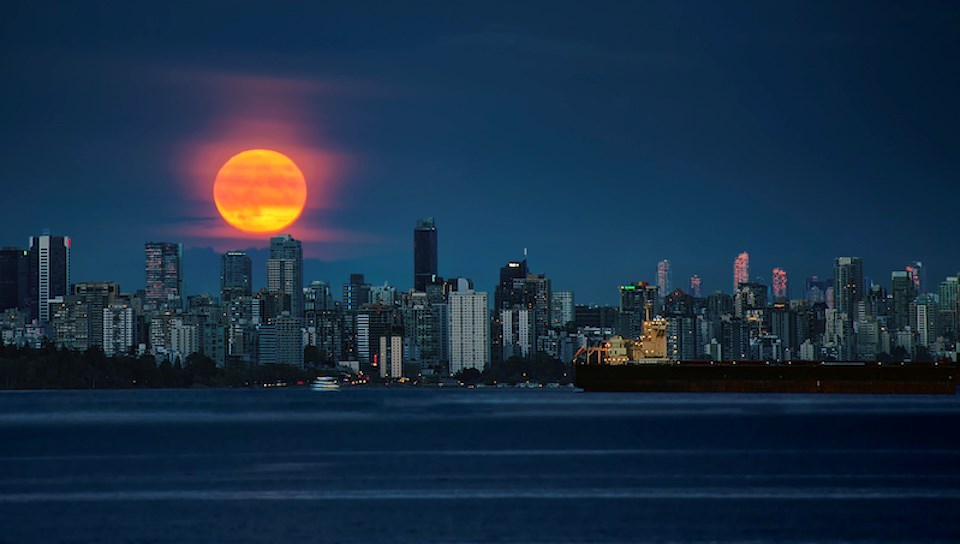Vancouverites can bathe in the silvery light of the full "snow" moon in the first week of February.
February's full moon — also called the "snow" moon — will be at its fullest in Vancouver on Sunday, Feb. 5 at 10:28 a.m., according to timeanddate.com. While the moon won't be visible at that time, the moon will appear nearly full the night before and the following night, too (depending on the Vancouver weather forecast).
While some full moon names have decidedly unique roots, the snow moon's title is straightforward. February sees heavier snowfall than other months in most of the United States, according to the Old Farmer's Almanac.
Other names for February's full moon include the Bald Eagle Moon or Eagle Moon (Cree), Bear Moon and Tlingit Black Bear Moon (Ojibwe), Raccoon Moon (Dakota), Goundhog Moon (Algonquin), and Goose Moon (Haida). The Cherokee also referred to it as the Bone Moon or Hungry Moon due to the lack of food during the month. Cherokee tribes would commune with their dead ancestors during this time.
Of course, the February moon isn't always associated with death across the globe. For example, many East Asian cultures ring in the new year during this time, and therefore they associate the moon with new beginnings. Many countries celebrate the occasion with lantern festivals and celebratory foods.
February's full moon will appear slightly larger than January's lunar offering did, however. This is because the first full moon of the year was considered a "micromoon," meaning it appeared smaller because it was at its farthest point from Earth, according to the Old Farmer's Almanac.



